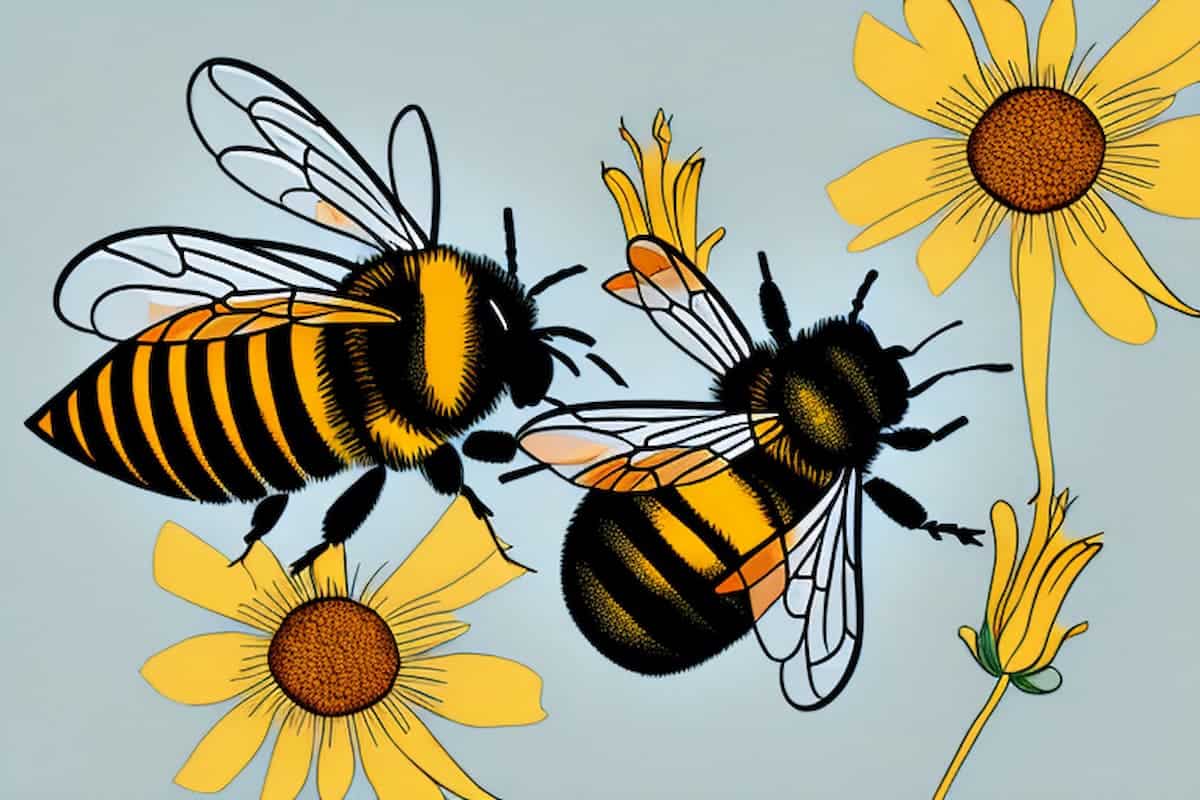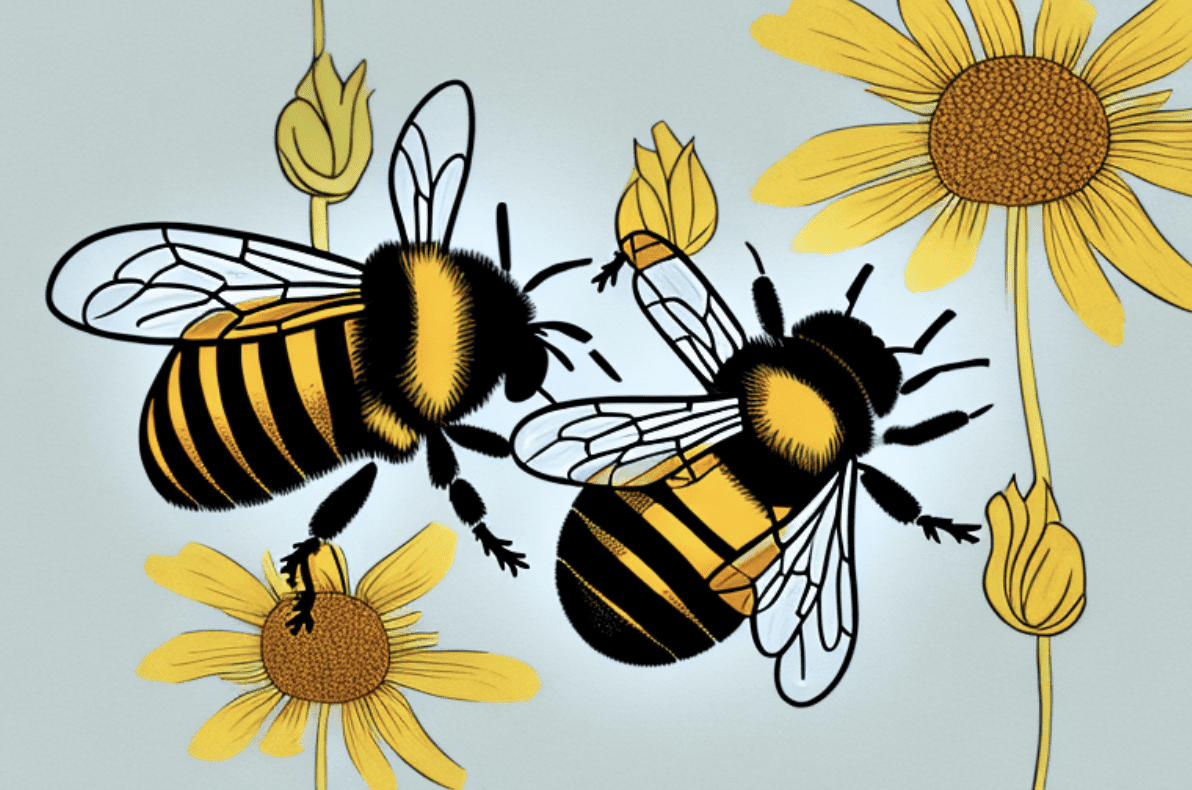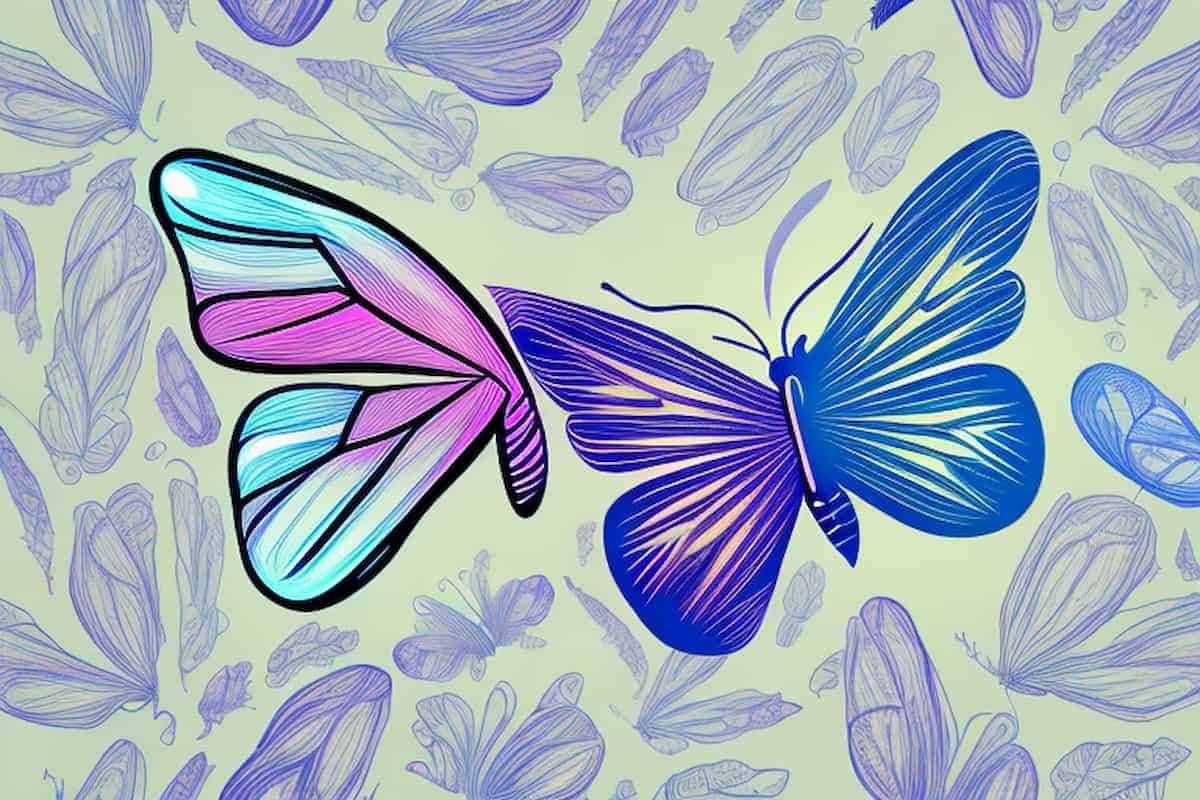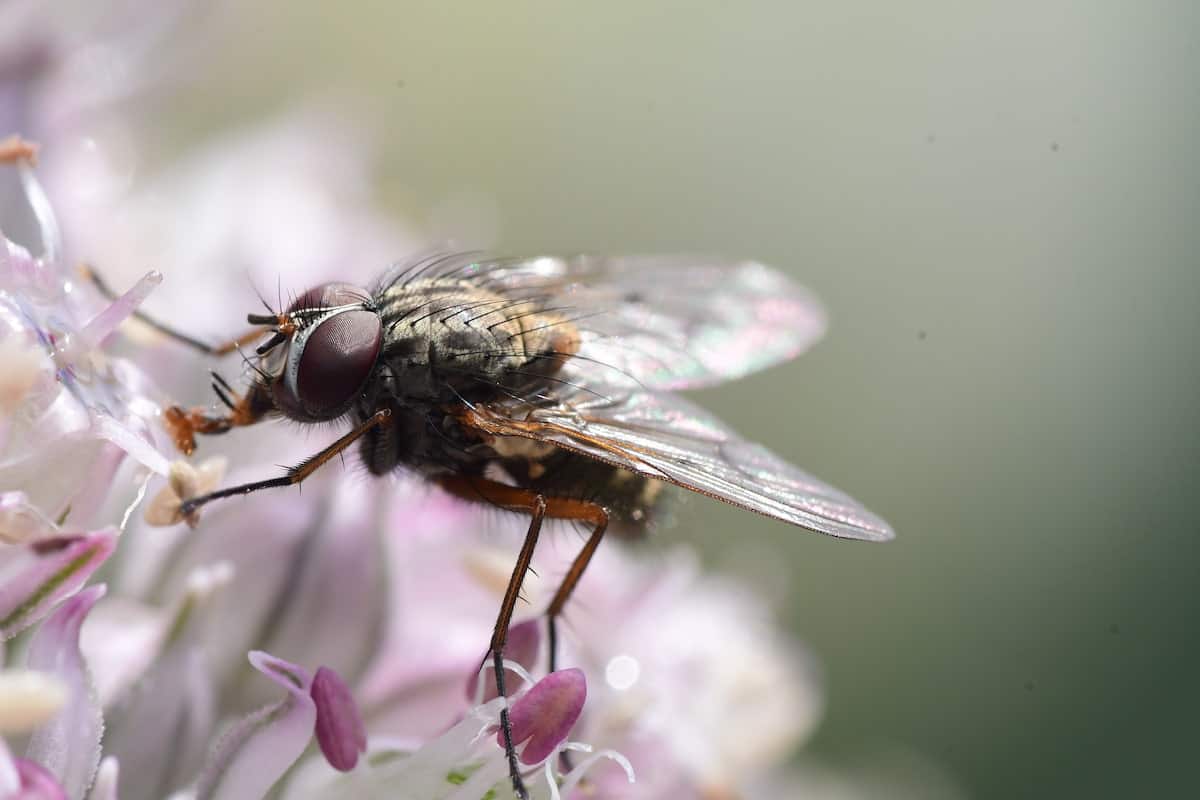Bumblebees are among the most fascinating insects in the world, known for their cute, fuzzy appearance and persistent buzzing sound. These industrious insects are also vital to our ecosystem, due to their role in pollination. But one question that has troubled scientists for a long time is whether or not bumblebees sleep. In this article, we are going to explore the sleeping habits of these fascinating creatures and discover what scientists have found out about their sleep patterns and habits.
Understanding Bumblebee Sleep Patterns
Before we dive into the science behind bumblebee sleep, it’s essential to understand how insects even sleep. Unlike humans, insects don’t have a centralized brain that controls their sleep and wake cycles. Instead, insects have a collection of neurons distributed throughout their bodies, which are responsible for controlling their sleep patterns.
But why do insects even need to sleep? While it’s not entirely clear, scientists believe that sleep helps insects conserve energy and avoid predators during times when they are less active. Additionally, sleep may play a role in memory consolidation and learning, similar to its role in humans.
Defining Sleep in Insects
While scientists have yet to come up with a definitive definition of sleep in insects, many agree that insect sleep is similar to that of mammals in some ways. During sleep, insects experience periods of reduced activity and decreased responsiveness to stimuli, similar to humans.
Interestingly, some insects, like the fruit fly, have been observed to have periods of rapid eye movement (REM) sleep, which is a hallmark of mammalian sleep. During REM sleep, the brain is highly active, and dreaming occurs.
The Circadian Rhythm of Bumblebees
Bumblebees, like most other insects, have an internal clock, which regulates their sleep and wake cycle. This internal clock is known as the “circadian rhythm.” Scientists have found that bumblebees follow a 24-hour sleep and wake cycle, just like humans.
But how do scientists know that bumblebees have a circadian rhythm? In one study, researchers exposed bumblebees to constant light or darkness for several days. They found that the bumblebees still exhibited a 24-hour sleep and wake cycle, indicating that their internal clock was still functioning.
How Bumblebees Rest During the Night
During the night, bumblebees hunker down in a resting position, with their antennae and legs folded under their bodies. Their metabolic rate drops, and they become quite still. Interestingly, if they are disturbed during this rest period, they will quickly become alert and start moving around again.
But what about during the day? Bumblebees are known for their busy work collecting nectar and pollen from flowers. During the day, bumblebees take short naps, lasting only a few minutes at a time. These naps help them recharge and continue their important work.
In conclusion, while bumblebees may seem like simple creatures, they have a complex sleep pattern that is regulated by an internal clock. By better understanding bumblebee sleep, we can learn more about the fascinating world of insects and the important role they play in our ecosystem.
The Importance of Sleep for Bumblebees
Like all animals, bumblebees need sleep to stay healthy and carry out their daily activities effectively. Here are some reasons why sleep is essential for bumblebees:
Energy Conservation and Restoration
Bumblebees, like all animals, need rest to conserve their energy and restore it for the next day’s activities. During sleep, bumblebees’ metabolic rate decreases, and they consume less energy than they do when they are active.
Interestingly, bumblebees have a unique way of sleeping. They do not have eyelids, so they sleep with their eyes open. However, their antennae, which are usually in constant motion, become still during sleep, indicating that they are in a state of rest.
Memory Consolidation and Learning
Sleep is crucial for memory consolidation and learning, both of which are vital for bumblebees. Scientists have found that bumblebees can learn and remember new things during their active period and consolidate these memories during sleep.
Studies have shown that bumblebees can remember the location of flowers and the colors of the petals. They can also learn to associate certain colors and patterns with the presence of nectar. This ability to learn and remember is crucial for their foraging and survival.
Impact on Foraging and Navigation
Bumblebees’ foraging and navigation abilities are essential for their survival, and sleep plays a vital role in both functions. A well-rested bumblebee is more efficient in foraging and navigation, leading to a better chance of finding food and returning to the nest safely.
During sleep, bumblebees consolidate the information they have gathered during their active period, which helps them navigate to and from the nest and find food sources more efficiently. This is particularly important for bumblebees because they have a limited range and need to find food sources quickly to survive.
In conclusion, sleep is essential for bumblebees, just as it is for all animals. It allows them to conserve energy, consolidate memories, and improve their foraging and navigation abilities. So the next time you see a bumblebee sleeping with its eyes open, remember that it is not just resting, but also preparing for the next day’s activities.
Where Do Bumblebees Sleep?
Bumblebees have some flexibility in where they choose to sleep. Here are some places where they might rest:
Sleeping Inside the Nest
Most bumblebee species build their nests underground, where they retreat for the night. These nests usually have multiple chambers, including a “resting chamber,” where bumblebees sleep. These resting chambers are well-insulated, protecting the bumblebees from the cold and other elements. The bumblebees work together to create a warm and cozy environment inside the nest, using their body heat to keep the temperature stable. They also use their wings to fan the air and regulate the humidity levels inside the nest.
Resting on Flowers and Plants
During the night, bumblebees may also rest on flowers or leaves. These locations provide a sheltered spot for bumblebees to rest that’s close to a food source. Scientists have found that bumblebees gravitate towards flowers they have previously visited, most likely due to their memory consolidation mechanisms. This means that bumblebees may choose to rest on flowers they have recently visited, as they are more familiar and comfortable with those particular flowers.
Factors Influencing Bumblebee Sleeping Locations
The location where bumblebees sleep can vary depending on factors such as the availability of food, temperature, and humidity. For example, bumblebees may gravitate towards warmer spots during colder nights or areas with high humidity to avoid dehydration. Additionally, bumblebees may choose to sleep in different locations depending on the time of year. In the summer, they may prefer to sleep outside of the nest to avoid the heat, while in the winter, they may prefer to sleep inside the nest to stay warm.
It’s also important to note that bumblebees are social insects and often sleep in groups. This allows them to share body heat and stay warm during colder nights. The size of the group can vary depending on the size of the nest and the number of bumblebees present.
Overall, bumblebees have a variety of options when it comes to sleeping locations. Whether they choose to sleep inside the nest or on a flower, they are able to adapt to their environment and find a comfortable spot to rest.
How Bumblebees Sleep in Different Seasons
Bumblebees are fascinating creatures, known for their fuzzy appearance and buzzing sound. But have you ever wondered how they sleep? In this article, we’ll explore the sleep patterns of bumblebees in different seasons and how they adapt to changing environments.
Sleep Patterns in Spring and Summer
During the spring and summer months, bumblebees are most active. They spend their time foraging for food and tending to their nests. However, just like humans, they need to rest too. Bumblebees typically sleep around 5-6 hours each day during this period. They spend the rest of their time foraging and building their nests.
Interestingly, bumblebees don’t sleep continuously like humans do. Instead, they take short naps throughout the day. These naps last only a few minutes, and bumblebees can quickly wake up to resume their activities.
Hibernation and Sleep in Winter
In colder climates, bumblebees hibernate during the winter months. Hibernation is a survival mechanism that allows them to conserve energy and survive the harsh winter conditions. During hibernation, bumblebees become dormant and are rarely active. They sleep for long hours each day, conserving their energy and relying on their stored fat reserves for survival.
Interestingly, bumblebees don’t hibernate alone. They hibernate in groups, with hundreds of other bumblebees in the same location. This group hibernation provides warmth and protection from the cold winter temperatures.
Adapting to Changing Environments
Bumblebees, like all animals, need to adapt to changing environments to survive. Scientists have found that bumblebees can alter their sleep patterns to adapt to changing environments. For example, if there’s a sudden food shortage or if the weather turns, bumblebees adjust their sleeping patterns to address these changes effectively.
Additionally, bumblebees have been observed to change their sleeping location to avoid predators or unfavorable weather conditions. They may move their nests to a more secure location or sleep in a different area altogether.
In conclusion, bumblebees have fascinating sleep patterns that vary depending on the season and environment. Their ability to adapt to changing conditions is a testament to their resilience and survival instincts.
Conclusion
Do bumblebees sleep? The answer is YES! These fascinating creatures have sleep patterns similar to those of humans, and they need sleep to carry out their daily activities and survive. Understanding bumblebee sleep patterns is crucial, especially considering the vital role they play in pollination and the health of our ecosystem. As we continue to learn more about bumblebees and other insects, we will be better equipped to protect and preserve them for future generations.





